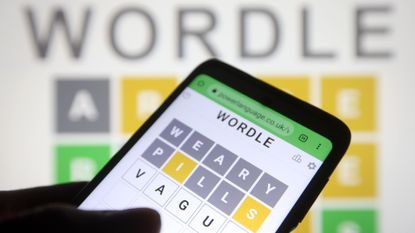The world of language learning and word games has been revolutionized by simple yet engaging activities that capture our attention. Among these isitalian wordle, a word game that has taken the internet by storm, offering users a daily dose of mental stimulation. But what happens when this universally loved puzzle gets an Italian twist? Enter Italian Wordle, a variant that combines the addictive nature of Wordle with the richness of the Italian language. In this article, we delve into the charm of Italian Wordle, its cultural and linguistic significance, and why it has become a favorite among language enthusiasts.
The Origins of Wordle and Its Italian Evolution

Wordle began as a simple pastime created by Josh Wardle in 2021, quickly transforming into a global phenomenon. Its appeal lies in its simplicity—guess a five-letter word in six attempts, using clues provided by the game’s color-coded feedback. As the game gained traction worldwide, variations began to emerge, catering to different languages and cultures.
Italian Wordle follows the same fundamental rules but with a twist—it uses Italian vocabulary. This adaptation has become an engaging tool for native speakers, Italian learners, and anyone passionate about Italy’s linguistic heritage. Italian Wordle provides a playful yet educational way to explore the language, whether you’re trying to perfect your Italian skills or immerse yourself in a new cultural experience.
The Joy of Learning Through Games
One of the most compelling aspects of Italian Wordle is how it makes learning enjoyable. Traditional methods of language acquisition often involve rote memorization of vocabulary and grammar rules, which can be tedious and uninspiring. Italian Wordle, however, transforms this process into a game, encouraging players to think critically and creatively.
The game’s format challenges players to recall and experiment with Italian words within specific constraints. For example, you might start with common Italian verbs such as amare (to love) or nouns like cielo (sky), only to realize that they don’t fit the word puzzle’s requirements. This trial-and-error process not only reinforces your existing vocabulary but also introduces you to new words, enhancing your linguistic repertoire.
Moreover, Italian Wordle’s feedback mechanism—indicating correct letters in the right or wrong position—stimulates problem-solving skills. It pushes players to analyze linguistic patterns, such as verb conjugations and plural forms, making the game as intellectually stimulating as it is fun.
Italian Wordle and Cultural Exploration
Beyond its linguistic benefits, Italian Wordle offers a window into Italy’s vibrant culture. The Italian language is deeply intertwined with the nation’s art, history, and culinary traditions, and the words featured in the game often reflect these aspects. For instance, players might encounter terms like vino (wine), opera (opera), or piazza (square), all of which evoke images of Italy’s iconic heritage.
Playing Italian Wordle can spark curiosity about the stories behind these words. What makes vino such an integral part of Italian identity? Why are piazzas considered the heart of Italian cities? As you solve each puzzle, you’re not just engaging with language—you’re also connecting with the essence of Italian life.
For language learners, this cultural immersion is invaluable. It bridges the gap between theoretical knowledge and real-world application, providing context that makes vocabulary meaningful and memorable. Italian Wordle, in essence, transforms words from abstract concepts into vivid representations of Italian culture.
The Appeal for Language Enthusiasts
Italian Wordle’s popularity extends beyond native speakers to a diverse global audience. Language enthusiasts find the game particularly appealing because it offers a unique challenge—grappling with the nuances of a foreign language. Unlike English Wordle, where the rules of spelling and phonetics might be second nature, Italian Wordle demands a deeper understanding of linguistic intricacies.
Italian, with its gendered nouns, verb conjugations, and phonetic consistency, presents a distinct learning curve. For instance, a word like bello (beautiful) might appear straightforward, but variations such as bella, belli, and belle complicate the puzzle. This complexity makes solving each word in Italian Wordle an accomplishment, a testament to the player’s growing proficiency and analytical skills.
Additionally, Italian Wordle fosters a sense of community among players. Online forums and social media platforms are abuzz with discussions about daily puzzles, strategies, and favorite words. This shared experience creates a supportive environment where learners and native speakers alike can exchange insights, celebrate successes, and deepen their appreciation for the Italian language.
The Role of Technology in Language Learning
Italian Wordle exemplifies how technology can transform language learning. In an increasingly digital world, apps and games have become indispensable tools for acquiring new skills. Italian Wordle stands out because it combines entertainment with education, seamlessly integrating language practice into daily routines.
The game’s accessibility is another factor contributing to its success. Available online and often free to play, Italian Wordle removes barriers to entry, making it an ideal resource for learners at all levels. Whether you’re a beginner experimenting with basic vocabulary or an advanced speaker honing your linguistic finesse, Italian Wordle caters to diverse needs.
Moreover, the game’s daily format encourages consistency—a critical component of language learning. By playing Italian Wordle regularly, you establish a habit that reinforces your commitment to mastering the language. This gamified approach ensures that learning remains engaging and sustainable over time.
Tips for Maximizing Your Italian Wordle Experience
While Italian Wordle is inherently user-friendly, a few strategies can enhance your experience. Start by familiarizing yourself with common Italian words, particularly those that frequently appear in everyday conversation. Building a strong foundation of vocabulary will boost your confidence and improve your success rate.
Additionally, pay attention to the game’s feedback and use it as a learning tool. Each guess provides valuable clues about Italian spelling, grammar, and word structure. Analyze your mistakes and celebrate your progress, recognizing that every attempt brings you closer to fluency.
Finally, consider pairing Italian Wordle with other language-learning resources. Apps like Duolingo, podcasts, and Italian-language films can complement your gaming experience, providing a well-rounded approach to language acquisition.
Why Italian Wordle Matters
In a world where digital distractions abound, Italian Wordle stands out as a meaningful way to engage with language and culture. It combines the thrill of puzzle-solving with the joy of learning, creating an experience that is both entertaining and enriching. For native speakers, it’s a nostalgic nod to their linguistic roots; for learners, it’s a gateway to mastering a beautiful and expressive language.
But Italian Wordle is more than just a game—it’s a celebration of Italy’s linguistic and cultural legacy. Each word you uncover is a testament to the power of language to connect, inspire, and educate. So whether you’re an Italian enthusiast or a curious newcomer, dive into Italian Wordle and discover a world of possibilities, one word at a time.




